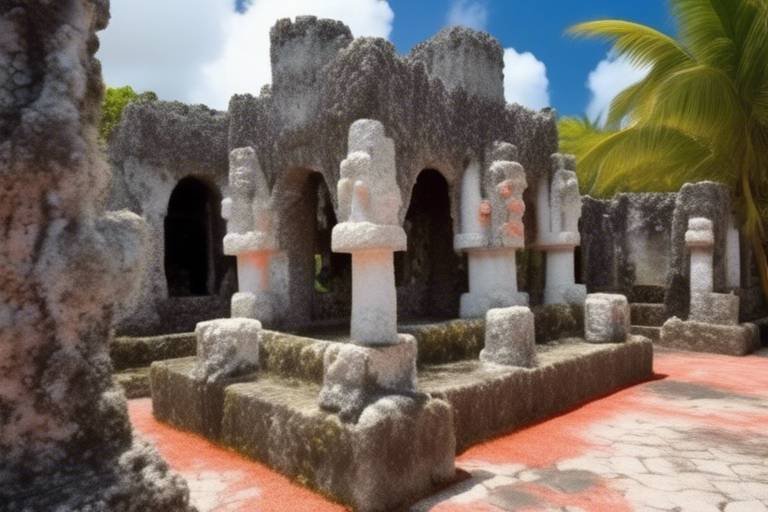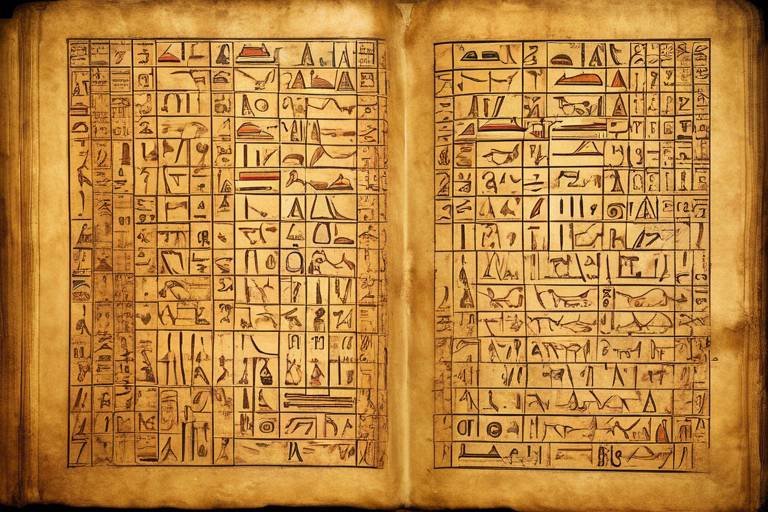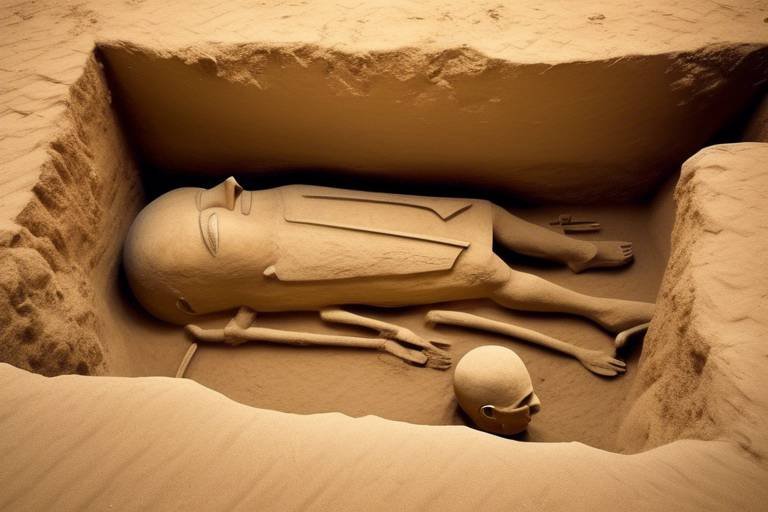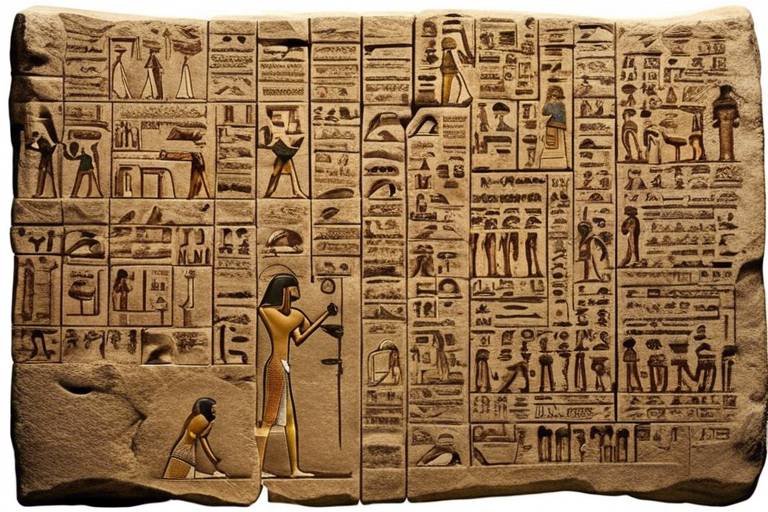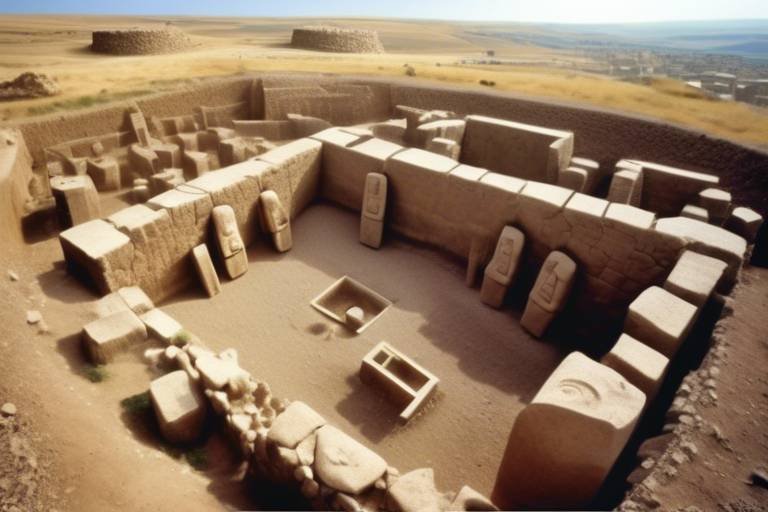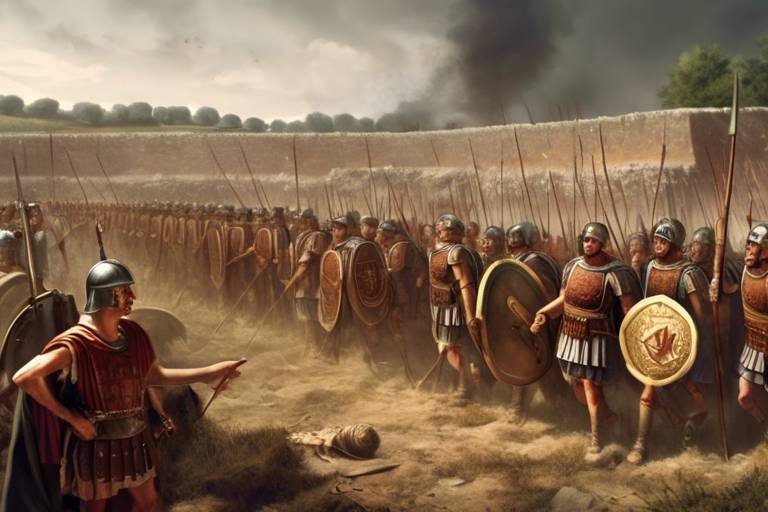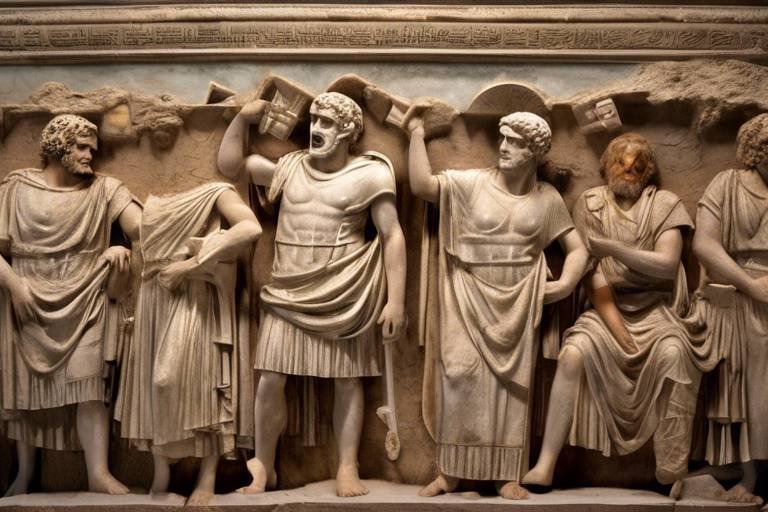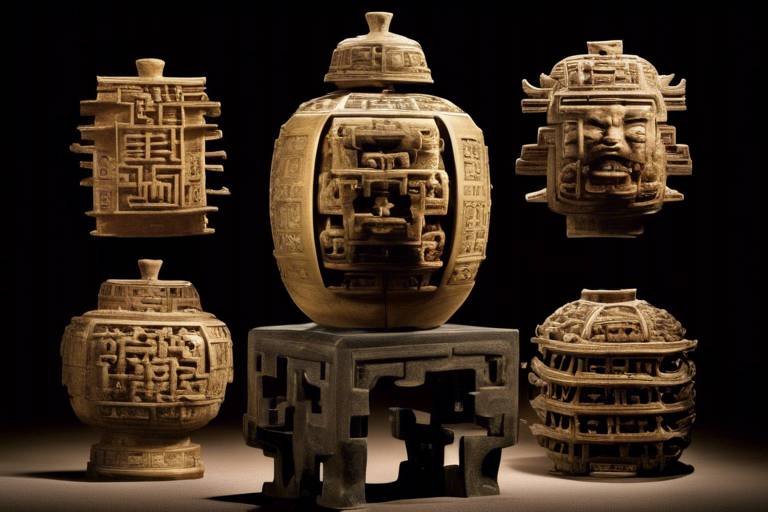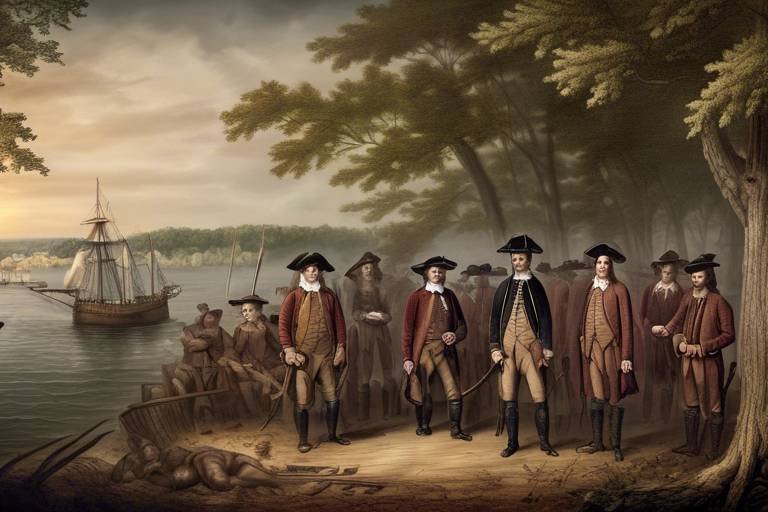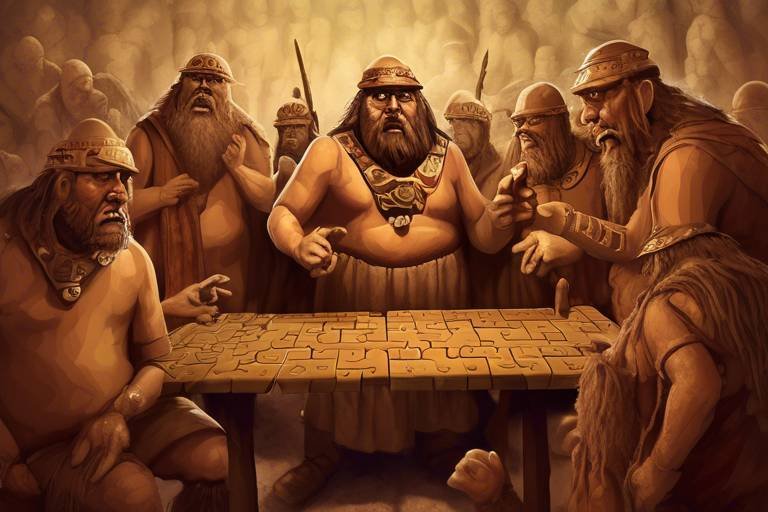The Enigmatic Mayan Calendar - What Does It Predict?
The Mayan calendar is a fascinating enigma that has captivated the minds of scholars and mystics for centuries. Its intricate system of timekeeping and predictions has sparked curiosity and speculation about the events it foretells. The Mayan civilization, known for its advanced understanding of astronomy and mathematics, developed a calendar that not only tracked time but also made prophecies about the future.
Originating from the ancient Mayan civilization in Mesoamerica, the Mayan calendar system reflects the cultural and historical context in which it was created. The calendar's structure is complex, consisting of various interlocking cycles and units of measurement that were used to monitor celestial events and religious ceremonies. It served as a tool for understanding the passage of time and predicting significant occurrences.
One of the most intriguing aspects of the Mayan calendar is its prophecies and predictions. Scholars and mystics have long debated the meaning behind the calendar's forecasts, with some believing it foretold cataclysmic events while others interpret it as a guide for spiritual growth and enlightenment. The interpretations of these predictions continue to intrigue and inspire curiosity.
The end of the Mayan Long Count calendar in December 2012 caused a stir in popular culture, leading to apocalyptic fears and speculation about the world's fate. However, the significance of this event goes beyond mere prophecy, delving into the cultural implications and legacy of the Mayan calendar. Debunking myths and exploring the enduring impact of this ancient system of timekeeping.
Despite the passage of time, the Mayan calendar remains relevant in modern-day society, influencing popular culture, spirituality, and New Age beliefs. Its predictions and teachings continue to be interpreted and applied in various contexts, reflecting the enduring influence of this ancient calendar system on contemporary thought and practices.
Comparisons with other calendar systems from different cultures offer valuable insights into how time is perceived and tracked across civilizations. By examining the similarities and differences between the Mayan calendar and other ancient and modern calendars, we gain a deeper understanding of the diverse ways in which humanity has sought to make sense of time and cosmic rhythms.
Archaeoastronomy plays a crucial role in decoding the astronomical knowledge embedded in the Mayan calendar. By studying how celestial observations were integrated into the calendar's design and predictions, archaeoastronomers shed light on the sophisticated understanding of the cosmos held by the ancient Mayans. This field of study continues to uncover the secrets of the Mayan calendar's astronomical wisdom.
The legacy of the Mayan calendar endures, shaping our understanding of time, astronomy, and ancient civilizations. Its enigmatic nature continues to fascinate and inspire curiosity, offering a window into the rich cultural heritage of the Mayan people and their profound insights into the mysteries of the universe.

Origins of the Mayan Calendar
The origins of the Mayan calendar can be traced back to the ancient Mayan civilization in Mesoamerica, where it was developed and refined over centuries. The Mayans were skilled astronomers and mathematicians, and their calendar system reflects their deep understanding of celestial cycles and timekeeping.
The Mayan calendar was not just a tool for tracking time but also held immense cultural and religious significance for the Mayan people. It was intricately connected to their agricultural practices, religious ceremonies, and societal events, shaping every aspect of their lives.
One of the most remarkable features of the Mayan calendar is its complexity and precision. It consisted of multiple interlocking cycles, including the Tzolk'in (260-day ritual calendar) and the Haab' (365-day solar calendar), which together formed the Long Count calendar used for tracking longer periods of time.
These cycles were based on careful observations of celestial phenomena, such as the movements of the sun, moon, planets, and stars. The Mayans believed that these celestial bodies influenced human affairs and used their calendar system to predict auspicious times for various activities.
Overall, the origins of the Mayan calendar are deeply rooted in the Mayan civilization's reverence for the natural world and their profound understanding of the interconnectedness of time, space, and spirituality.

Structure of the Calendar
The Mayan calendar is a fascinating and complex system that has intrigued scholars and enthusiasts for centuries. Its structure is intricate, consisting of various interlocking cycles and units of measurement that were used by the ancient Mayan civilization to track time, celestial events, and religious ceremonies. At the core of the calendar are two main cycles: the Tzolk'in, a 260-day ritual calendar, and the Haab', a 365-day solar calendar. These cycles interlock to form a larger cycle known as the Calendar Round, which lasts for 52 years.
Additionally, the Mayans utilized a Long Count calendar, which is based on a system of baktuns, k'atuns, tuns, uinals, and k'ins. The Long Count calendar was used for tracking longer periods of time and historical events. Each cycle within the Long Count calendar represents a different unit of time, with the baktun being the longest cycle equivalent to approximately 394.3 years.
Moreover, the Mayan calendar incorporates a sacred calendar known as the Tzolk'in, which consists of 20 named days combined with 13 numbers, resulting in a 260-day cycle. This calendar was used for divination and religious purposes, with each day having its own unique significance and associated rituals.
One of the most intriguing aspects of the Mayan calendar's structure is its cyclical nature, with the various cycles repeating and aligning at different intervals. This cyclical nature reflects the Mayan belief in the interconnectedness of time, nature, and the divine. The calendar was not just a tool for tracking time but also a sacred instrument that guided the Mayan people in their daily lives and religious practices.

Prophecies and Predictions
Prophecies and predictions have long been intertwined with the enigmatic Mayan calendar, sparking curiosity and speculation among scholars and mystics alike. The intricate system of the Mayan calendar has led to various theories regarding its foresight into significant global events. While some view these predictions as purely historical interpretations, others believe in the mystical powers embedded within the calendar.
One of the most well-known prophecies associated with the Mayan calendar is the speculation surrounding the end of the Long Count calendar in December 2012. This date was surrounded by apocalyptic fears and doomsday predictions, with many believing it marked the end of the world. However, scholars and experts debunked these myths, attributing the significance to the transition to a new cycle rather than an impending catastrophe.
Modern-day interpretations of the Mayan calendar's predictions vary widely, with some enthusiasts claiming it foretells major global shifts and transformative events. From natural disasters to political upheavals, the calendar's predictions are often seen as cryptic messages waiting to be deciphered. The allure of uncovering hidden meanings and unraveling the mysteries of the Mayan calendar continues to captivate individuals seeking insights into the future.
While skeptics dismiss the prophetic abilities of the Mayan calendar as mere coincidence or symbolic interpretations, others delve deeper into its complexities to extract potential forecasts. The interplay between historical events and the calendar's intricate design fuels ongoing debates about its predictive powers and relevance in the modern era.

End of the Long Count Calendar
The end of the Mayan Long Count calendar in December 2012 marked a significant moment that captured the world's attention. This date, often associated with apocalyptic prophecies and fears of the end of the world, was a subject of intense speculation and debate. However, contrary to popular belief, the end of the Long Count calendar did not signify the end of the world but rather the completion of a major cycle in the Mayan calendar system.
According to Mayan beliefs, the end of a calendar cycle was a time of transition and renewal rather than destruction. It was seen as an opportunity for spiritual growth and a chance to reflect on the past while looking towards the future. The completion of the Long Count calendar was viewed as a time of transformation and rebirth, symbolizing the cyclical nature of time in Mayan cosmology.
While some interpreted the end of the Long Count calendar as a prediction of catastrophic events, many scholars and experts dismissed these claims as sensationalized misinterpretations. Instead, they emphasized the cultural and historical significance of the calendar's cyclical nature and its role in shaping Mayan society's understanding of time and cosmology.
Despite the widespread attention surrounding the end of the Long Count calendar in 2012, the event ultimately passed without the apocalyptic events that some had feared. It served as a reminder of the enduring legacy of the Mayan calendar system and its ability to captivate the imagination of people around the world.

Modern-Day Relevance
The Mayan calendar, despite originating centuries ago, continues to hold a significant place in modern-day society. Its relevance extends beyond historical curiosity, influencing various aspects of popular culture, spirituality, and New Age beliefs. The intricate system of the Mayan calendar has captured the imagination of many, sparking discussions and interpretations about its predictions and prophecies.
One of the key reasons for the modern-day relevance of the Mayan calendar lies in its perceived ability to forecast significant events. While some view it as a tool for predicting global occurrences, others interpret its cycles and symbols in a more personal context, seeking guidance and insight into their own lives.
Moreover, the Mayan calendar has become intertwined with contemporary notions of time and cosmic interconnectedness. Its intricate structure and cyclical nature resonate with individuals seeking a deeper understanding of the universe and their place within it.
As the world grapples with uncertainty and rapid change, the enduring legacy of the Mayan calendar serves as a reminder of the enduring quest for knowledge and meaning. Its continued presence in modern discussions reflects a timeless fascination with the mysteries of the past and the potential insights they may offer for the future.

Comparisons with Other Calendars
When comparing the Mayan calendar with other ancient and modern calendar systems, it becomes evident that each culture has its unique way of perceiving and tracking time. The Mayan calendar, known for its complexity and precision, differs significantly from calendars used in other civilizations. While the Gregorian calendar, widely used today, is based on a solar year divided into months and days, the Mayan calendar incorporates multiple cycles that interact to create a more intricate system of timekeeping.
One of the key differences between the Mayan calendar and other calendars lies in its emphasis on cycles and patterns in nature. The Mayans were keen observers of celestial events and integrated their astronomical knowledge into the calendar's design. In contrast, some calendars focus more on practical considerations such as agricultural cycles or political events.
Furthermore, the Mayan calendar's cyclical nature sets it apart from linear calendars that progress in a straight line without repeating patterns. The concept of cyclical time in the Mayan calendar reflects the belief in the interconnectedness of past, present, and future, emphasizing the cyclical nature of existence.
Despite these differences, there are also similarities between the Mayan calendar and other calendar systems. Many ancient civilizations, including the Egyptians and the Chinese, developed sophisticated calendars based on astronomical observations and mathematical calculations. These calendars served not only practical purposes but also had spiritual and religious significance.
Overall, comparing the Mayan calendar with other calendars provides valuable insights into the diverse ways in which human societies have conceptualized and organized time throughout history. Each calendar reflects the unique cultural, religious, and scientific perspectives of the civilization that created it, offering a window into the complexities of human thought and perception of the passage of time.

Archaeoastronomy and the Mayan Calendar
Archaeoastronomy plays a crucial role in unraveling the intricate connection between the Mayan calendar and celestial phenomena. This interdisciplinary field combines archaeology and astronomy to decode the astronomical knowledge embedded in the Mayan calendar system. By studying ancient Mayan observatories, temples, and inscriptions, archaeoastronomers have gained insights into how the Mayans integrated celestial observations into their calendar.
One fascinating aspect of the Mayan calendar is its alignment with celestial events such as solstices, equinoxes, and the movements of planets and stars. The Mayans were keen observers of the night sky, and their calendar reflects a deep understanding of celestial cycles. Through careful observation and recording of astronomical data, the Mayans were able to predict celestial events with remarkable accuracy.
Archaeoastronomers have identified correlations between specific dates in the Mayan calendar and significant astronomical events. For example, certain temple alignments coincide with the rising or setting of the Sun on important dates in the calendar. These alignments suggest that the Mayans used celestial phenomena to mark key ceremonial or agricultural events, highlighting the intricate relationship between astronomy and Mayan society.
Furthermore, the Mayan calendar's Long Count system, with its emphasis on cycles of time, reflects the Mayans' profound cosmological beliefs. By studying the alignment of Mayan monuments with celestial bodies, archaeoastronomers have gained insights into the Mayans' spiritual and religious practices. The integration of astronomy into the Mayan calendar underscores the interconnectedness of time, space, and the divine in Mayan cosmology.
Overall, the study of archaeoastronomy sheds light on the sophisticated astronomical knowledge of the ancient Mayans and enhances our understanding of the cultural significance of the Mayan calendar. By decoding the celestial symbolism embedded in Mayan architecture and inscriptions, archaeoastronomers continue to uncover the rich tapestry of knowledge woven into this enigmatic calendar system.

Legacy of the Mayan Calendar
The legacy of the Mayan calendar transcends time and continues to captivate the imagination of people around the world. This ancient calendar system, with its intricate calculations and precise astronomical observations, has left a lasting impact on our understanding of time, astronomy, and the ancient Mayan civilization.
One of the key aspects of the Mayan calendar's legacy is its role in shaping our perception of time. The Mayans' sophisticated calendar system, which included multiple cycles of varying lengths, allowed them to track time with remarkable accuracy. This precision in timekeeping not only facilitated their daily lives but also influenced their religious ceremonies and agricultural practices.
Furthermore, the Mayan calendar's connection to astronomy highlights the advanced knowledge and scientific achievements of this ancient civilization. By aligning their calendar with celestial events such as solstices, equinoxes, and planetary movements, the Mayans demonstrated a profound understanding of the cosmos and its influence on earthly affairs.
Moreover, the enduring legacy of the Mayan calendar extends beyond its historical and scientific significance. In contemporary times, the calendar continues to inspire curiosity, speculation, and debate. Its prophecies and predictions have been interpreted in various ways, with some viewing it as a tool for forecasting global events and others as a symbolic representation of cyclical patterns in nature.
The cultural impact of the Mayan calendar is also evident in popular culture, spirituality, and New Age beliefs. References to the calendar can be found in literature, art, and media, reflecting its enduring influence on modern society. The mystique surrounding the Mayan calendar persists, fueling interest in its mysteries and interpretations.
In conclusion, the legacy of the Mayan calendar serves as a testament to the ingenuity and wisdom of the ancient Mayan civilization. Its intricate design, astronomical insights, and cultural significance continue to fascinate and inspire generations, reminding us of the enduring power of human knowledge and imagination.
Frequently Asked Questions
- What is the Mayan calendar?
The Mayan calendar is a complex system of timekeeping developed by the ancient Mayan civilization in Mesoamerica. It consists of various interlocking cycles and units of measurement used to track time, celestial events, and religious ceremonies.
- What does the Mayan calendar predict?
The Mayan calendar has been associated with prophecies and predictions about significant global events. While interpretations vary, some believe it foretells major shifts in consciousness or cataclysmic events.
- Is the end of the Mayan Long Count calendar significant?
The end of the Mayan Long Count calendar in December 2012 sparked apocalyptic fears and speculation. However, it is important to note that the Mayans themselves did not predict the end of the world but rather a new cycle of time.
- How is the Mayan calendar relevant today?
The Mayan calendar continues to have an impact on popular culture, spirituality, and New Age beliefs. Many find inspiration in its cyclical view of time and use it as a tool for personal growth and reflection.
- What sets the Mayan calendar apart from other calendar systems?
The Mayan calendar's intricate structure and incorporation of celestial observations set it apart from other calendar systems. It reflects the Mayan civilization's advanced understanding of astronomy and timekeeping.



